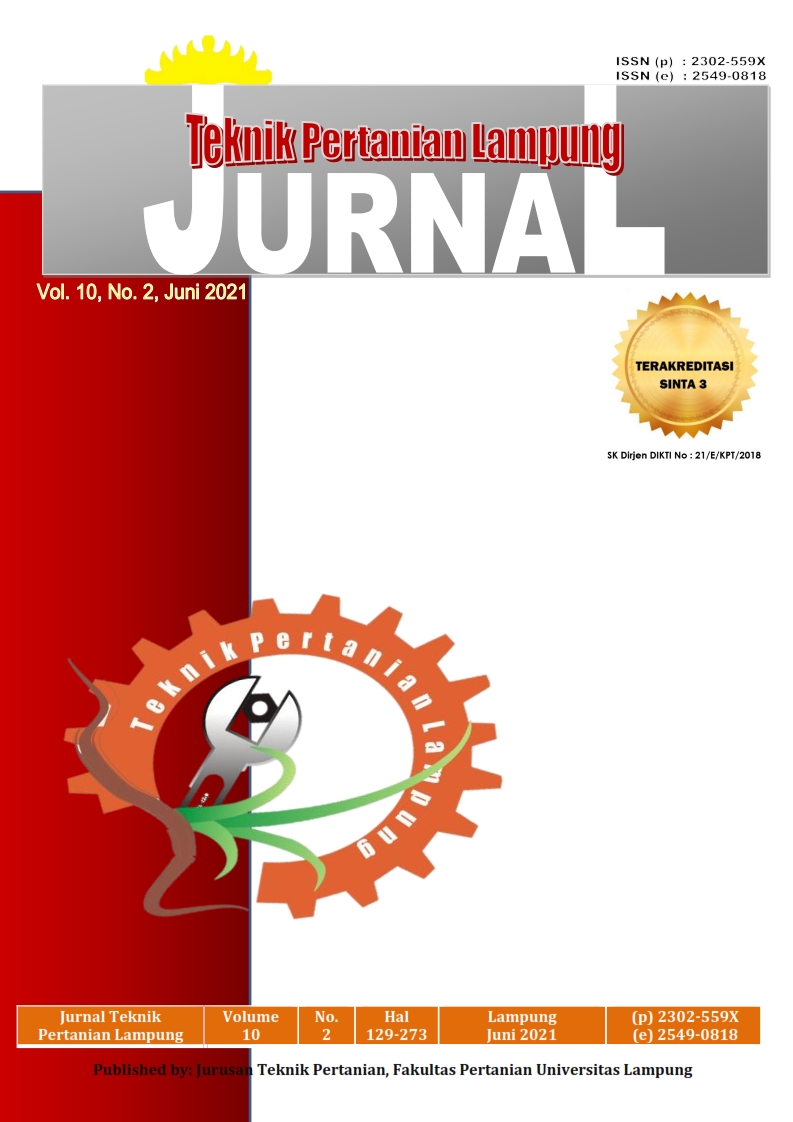AUDIT ENERGI PROSES PENGOLAHAN TEH HITAM (CTC) DENGAN SISTEM PENGAMBILAN KEPUTUSAN METODE SPACE
DOI:
https://doi.org/10.23960/jtep-l.v10i2.183-192Abstract
The favorite product of black tea is tea leaf that are ground using the crush, tear and curl (CTC) method. This process able to produce the dry tea which has high quality with a strong aroma and taste, and high levels of antioxidants. This study aimed to conduct an energy analysis on the processing of black tea CTC at PTP. Nusantara VIII Rancabali to find out the steps towards efficient use of energy, opportunities and conservation efforts. The research method used is descriptive analysis method. The present paper conducted the energy audit calculations which are based on the energy consumption in each tea processing activity from the time. The calculation of energy audit was conducted from preparation of raw materials until the packaging of tea product. The results of the energy audit on the CTC black tea processing showed that for each ton of tea leaves required the energy is about 3.930,66 MJ.ton-1The greatest energy use is drying process which is at 1.424,67 MJ.ton-1 or 36,24%. The results of the analysis space was at quadrant conservative aggressive. Aggressive conservative steps that can be taken in the black tea processing are to develop activities towards energy saving, such as changing fuel from ordinary wood to wood pellets and adding or modifying machine tools so that the installed capacity of each processs to fulfill the capacity input of leaf tea.
Key words: CTC, energy analysis, energy saving, processing of tea
References
Abdalla, R., Herwanto, T., Saukat M., Handarto. 2017. Analisis Energi Proses Prapanen Tebu (Studi Kasus Di Pt. Rajawali II Unit Pg. Jatitujuh, Kabupaten Majalengka, Jawa Barat). Jurnal Teknotan, 11(2): 11-23
David, F. R. 2011. Strategic Management, Concept and Cases. Francis Marion University. Florence, South Carolina
Direksi PTP Nusantara VIII. 2008. Standar Operasional Prosedur Pengolahan Teh Hitam. PTPN VIII. Bandung.
Hatirli, S. A., B. Ozkan, and C. Fert. 2006. Energy inputs and crop yield relationship in greenhouse tomato production. Renewable Energy, 31: 427-438.
Herwanto, T., Nurjanah, S., Saukat, M., dan Hafidz, S. 2018. Analisis Energi Pada Proses Pengolahan Teh Hitam Ortodoks. Jurnal Teknotan 12(1): 65-72
Indarti D. 2015. Outlook teh Komoditas Pertanian Subsektor Perkebunan. Seketariat Jenderal Kementerian Pertanian Pusat Data dan Sistem Informasi Pertanian. Jakarta.
Jain, Jines C., and Takeo. 2007. A Review The Enzyme of Tea and Their Role in Tea Making. Journal of Biochemistry, 8(4): 243-279
Laksmana, I. 2007. Analisis Efisiensi Penggunaan Energi Pada Industri Gula Tebu di PT. PG. Rajawali II Unit PG. Jatitujuh Majalengka, Jawa Barat. Skripsi. Fakultas Teknologi Pertanian. IPB, Bogor.
Moran, M. J and H. N. Shapiro. 2006. Fundamental of Engineering Thermodynamic, 5th Edition. John Wiley and Sons Inc. United States of America.
Setiawati, I dan Nasikun. 1991. Teh: Kajian sosial-ekonomi. Aditya Media. Yogyakarta.
Setyamidjaja, D. 2000. Teh Budidaya dan Pengolahan Pasca Panen. Kanisius, Yogyakarta.
Sugandi, W., Macklin, B. P., Thoriq, A., dan Rifki, F. 2021. Kajian Kebutuhan Energi Spesifik dan Kapasitas Kerja Mesin Pengering Gabah Berbahan Bakar Kayu. Jurnal Teknik Pertanian Lampung, 10(1): 16-25
Sutejo, A., Mardjan, S, S., Hermawan, W., dan Desrial. 2018. Kinerja Mesin Pemisah Potongan Tangkai dan Daun Teh. Jurnal Teknik Pertanian Lampung, 7(3): 160-167.
Suprihatini, R. 2005. Daya Saing Ekspor Teh Indonesia di Pasar Teh Dunia. Jurnal Agro Ekonomi, 23(1): 1-29.
Yuliani, A dan Susanto, Eko. 2019. Pentingnya Strategi Bisnis yang Tepat Dalam Mempertahankan Eksistensi Suatu Usaha. Jurnal Manajemen Bisnis dan Kewirausahaan, 3(1): 15-22.
Downloads
Published
Issue
Section
License
- Authors who publish with this journal agree to the following terms:
- Authors retain copyright and grant the journal right of first publication with the work simultaneously licensed under a Creative Commons Attribution-ShareAlike 4.0 International Lice that allows others to share the work with an acknowledgement of the work's authorship and initial publication in this journal.
- Authors are able to enter into separate, additional contractual arrangements for the non-exclusive distribution of the journal's published version of the work (e.g., post it to an institutional repository or publish it in a book), with an acknowledgement of its initial publication in this journal.
- Authors are permitted and encouraged to post their work online (e.g., in institutional repositories or on their website) prior to and during the submission process, as it can lead to productive exchanges, as well as earlier and greater citation of published work (See The Effect of Open Access).
Jurnal Teknik Pertanian Lampung

JTEPL is licensed under a Creative Commons Attribution-ShareAlike 4.0 International License.

